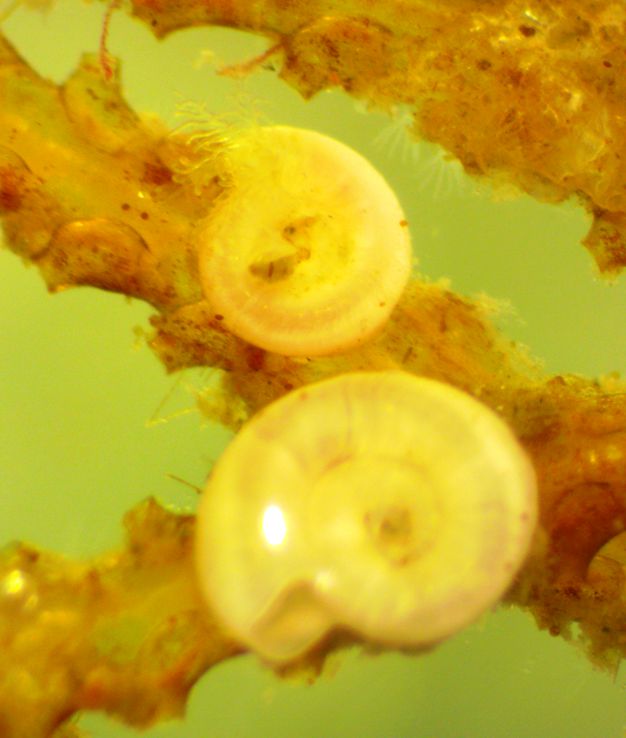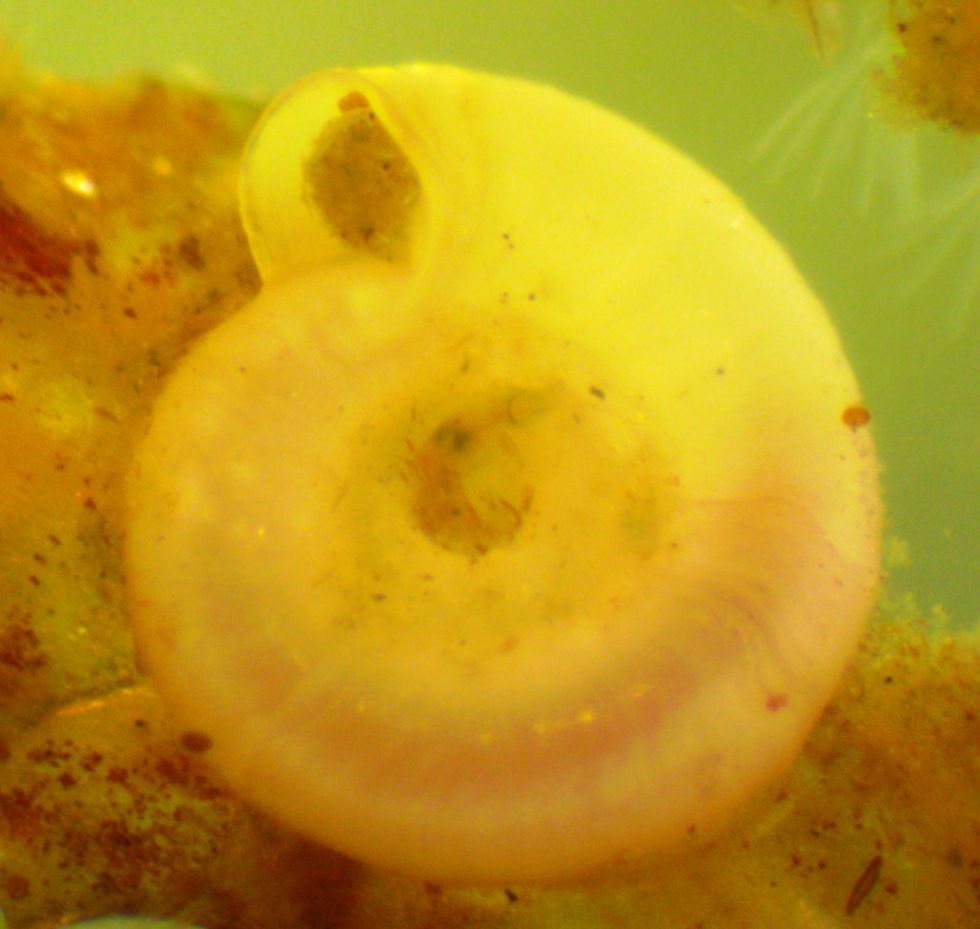Circeis spirillum (Linnaeus, 1758)Common name(s): |
|
| Synonyms: Serpula spirillum |  |
|
Phylum Annelida
Order Sabellida
|
|
| Circeis spirillum, top individual's tube coil is 1 mm in diameter, living on an Abietinaria constans hydroid. Note the dark operculum held near the center of the coil on the top individual. | |
| (Photo by: Dave Cowles, August 2014) | |
Description: Members of Family Spirorbidae have most or all segments not longer than wide. The head has a series of radioles and an operculum. Members of the family are quite small and build a distinctive coiled, calcareous tube attached to the substrate (the part that attaches to the substrate is the dorsal side). The thoracic region of the worm's body has only 4 setigers. Circeis spirillum builds a thin, translucent calcareous tube that is round in cross section and always spirals dextrally (counterclockwise). The end of the tube usually points upward from the substrate (but not in this individual). The collar setae are obliquely geniculate, and have cross striations. The embryos are attached singly to the inside of the tube.
How to Distinguish from Similar Species:Circeis armoricana has collar setae that are sharply geniculate and have no cross striations, the tube is porcellanous rather than clear, and it lives on shells, kelp, or decapods. Several Spirorbis species have tubes that coil sinestrally (clockwise).
Geographical Range: Circumboreal (Arctic, North Pacific, and North Atlantic), but no farther south than where the water reaches 15 degrees C in August.
Depth Range: Subtidal
Habitat: Grows attached to bryozoans and hydroids
Biology/Natural History:
| Return to: | |||
| Main Page | Alphabetic Index | Systematic Index | Glossary |
References:
Dichotomous Keys:Carlton, 2007
Kozloff, 1987, 1996
General References:
Scientific Articles:
Web sites:
General Notes and Observations: Locations, abundances, unusual behaviors:

A view of the same individual after it has gone back into the tube
and closed the entrance with its operculum
Authors and Editors of
Page:
Dave Cowles (2014): Created original page
CSS coding for page developed by Jonathan Cowles (2007)
Salish Sea Invertebrates web site provided courtesy of Walla
Walla University